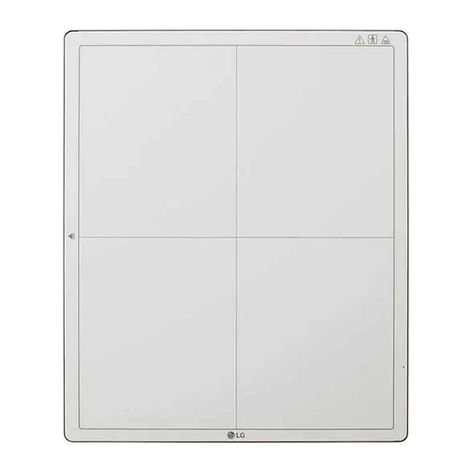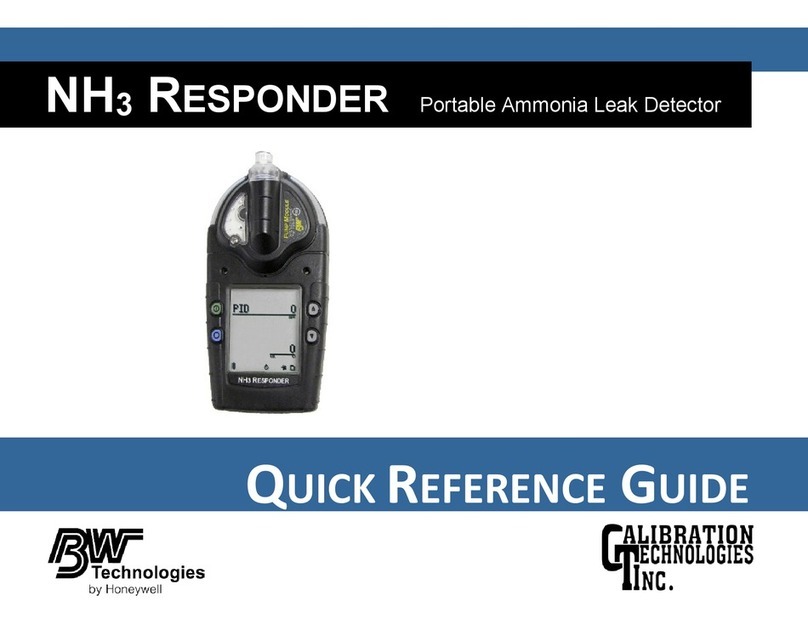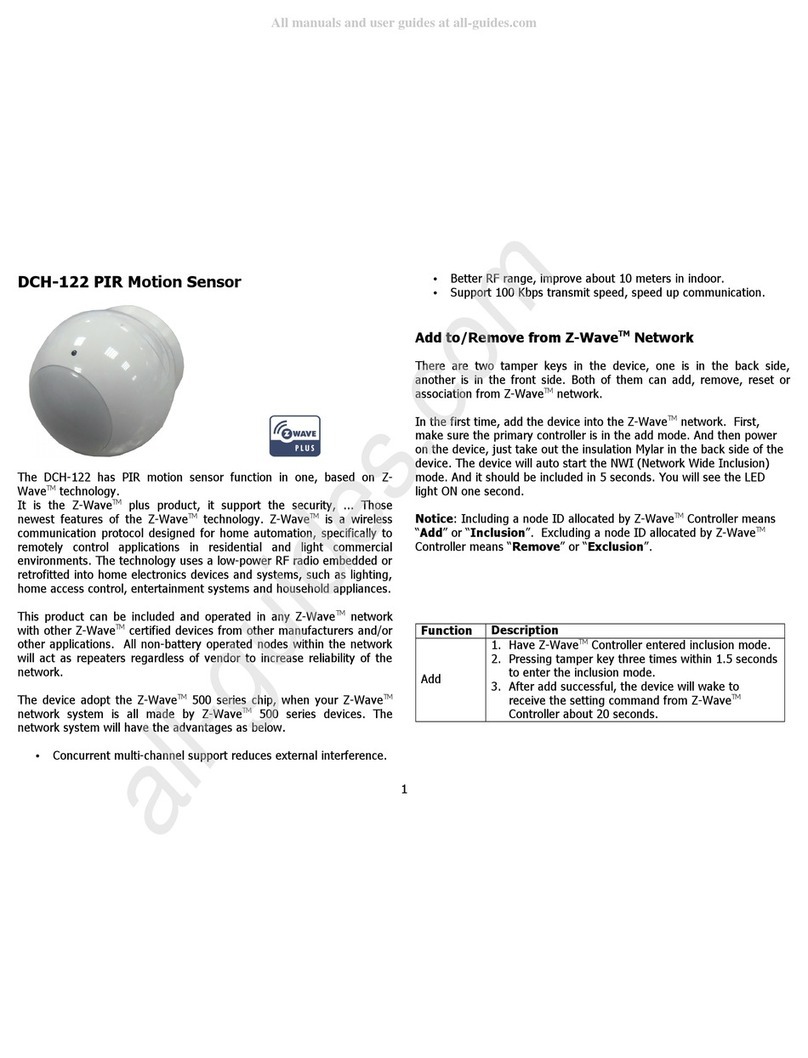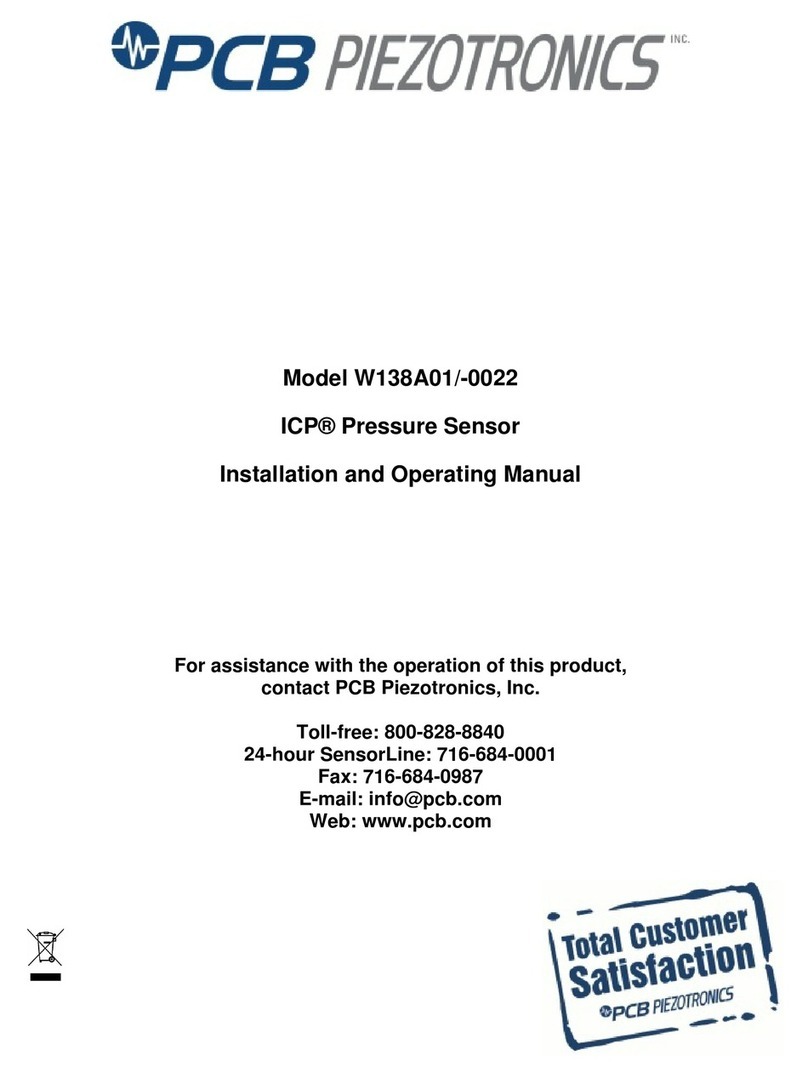Bindicator Mark-4 User manual

IOM
Mark-4™/GP-4™Yo-Yo™
Installation & Operation Manual
LBY180112 Rev. B
O
Or
rd
de
er
r
f
fr
ro
om
m:
:
C
C
A
A
B
Br
ri
ig
gg
gs
s
C
Co
om
mp
pa
an
ny
y
622 Mary Street; Suite 101; Warminster, PA 18974
Phone: 267-673-8117 - Fax: 267-673-8118
www.cabriggs.com


Mark-4TM/GP-4TM Yo-YoTM
Installation & Operation Manual
CONTENTS
I. HANDLING & STORAGE....................................................................................................................... 1
Inspection and Handling
Disposal and Recycling
Storage
II. GENERAL SAFETY................................................................................................................................ 2
Authorized Personnel
Use
Misuse
III. PRODUCT DESCRIPTION .................................................................................................................... 3
Function
Applications
Features
TechnicalSpecications
Approvals
IV. MECHANICAL INSTALLATION ............................................................................................................. 6
Guidelines
General Installation
Remote Display Unit Installation
V. ELECTRICAL INSTALLATION ............................................................................................................... 7
General Safety
Disconnect Requirements for Permanently Installed Equipment
Protective Earth Ground
Guidelines
Set Sensor Address
Figure 1. Wiring for Multiple Unit-To-Remote Display
Figure 2. Board Layout - Sensor Address Location
Figure 3. Board Layout
Figure 4. Single Unit-To-Remote Display Wiring
VI. SET-UP ................................................................................................................................................ 11
Lines of Display
Operating Mode Functions
Program Mode Functions
To Program a Sensor
Settings Menu
Denitions&MenuDescriptions
VII. MAINTENANCE ................................................................................................................................... 19
Preventative Maintenance
Replacement Parts
VIII. TROUBLESHOOTING ......................................................................................................................... 20
IX. DIMENSIONAL DRAWINGS................................................................................................................ 22

SAFETY SYMBOLS
WARNING:
IDENTIFIES CONDITIONS OR PROCEDURES, WHICH IF NOT FOLLOWED,
COULD RESULT IN SERIOUS INJURY. RISK OF ELECTRICAL SHOCK.
CAUTION:
IDENTIFIES CONDITIONS OR PROCEDURES, WHICH IF NOT FOLLOWED,
COULD RESULT IN SERIOUS DAMAGE OR FAILURE OF THE EQUIPMENT.

1
www.bindicator.com
LBY180112 Rev. B
I. HANDLING AND STORAGE
SAVE THESE INSTRUCTIONS
INSPECTION AND HANDLING
Do not dispose of the carton or packing materials.
Each package should be inspected upon receipt for damage that may have occurred due to mishandling during
shipping. If the unit is received damaged, notify the carrier or the factory for instructions. Failure to do so may
void your warranty. If you have any problems or questions, consult Customer Support at 1-800-778-9242.
DISPOSAL AND RECYCLING
This product can be recycled by specialized companies and must not be disposed of in a municipal collection
site. If you do not have the means to dispose of properly, please contact Bindicator for return and disposal
instructions or options.
STORAGE
If the device is not scheduled for immediate installation following delivery, the following steps should be observed:
1. Following inspection, repackage the unit into its original packaging.
2. Select a clean dry site, free of vibration, shock and impact hazards.
3. If storage will be extended longer than 30 days, the unit must be stored at temperatures between
32º and 158º F (0º to 70° C) in non-condensing atmosphere with humidity less than 85%.
Mark-4TM/GP-4TM Yo-YoTM
CAUTION: DO NOT STORE A NON-POWERED UNIT OUTDOORS FOR A PROLONGED PERIOD.

2
www.bindicator.com
LBY180112 Rev. B
II. GENERAL SAFETY
AUTHORIZED PERSONNEL
Allinstructionsdescribedinthedocumentmustbeperformedbyauthorizedandqualiedservicepersonnel
only. Before installing the unit, please read these instructions and familiarize yourself with the requirements and
functions of the device. The required personal protective equipment must always be worn when servicing this
device.
USE
The device is solely intended for use as described in this manual. Reliable operation is ensured only if the
instrumentisusedaccordingtothespecicationsdescribedinthisdocument.Forsafetyandwarranty
reasons,useofaccessoryequipmentnotrecommendedbythemanufacturerormodicationofthisdeviceis
explicitlyforbidden.Allservicingofthisequipmentmustbeperformedbyqualiedservicepersonnelonly.This
device should be mounted in locations where it will not be subject to tampering by unauthorized personnel.
MISUSE
Improper use or installation of this device may cause the following:
• Personalinjuryorharm
• Applicationspecichazardssuchasvesseloverll
• Damagetothedeviceorsystem
If any questions or problems arise during installation of this equipment, please contact the Customer Support
at 800-778-9242.

3
www.bindicator.com
LBY180112 Rev. B
III. PRODUCT DESCRIPTION
FUNCTION
The Bindicator®Yo-Yo™is a sensor that is mounted to the top of a vessel and measures the distance to the
product in the tank. This is done by lowering a weight to the surface of the product, while measuring the amount
of cable used. When the weight contacts the material, the unit senses the loss of weight. The motor reverses
and automatically returns the weight to its home position, sealing the weight against a bellows assembly in the
bottom of the sensor housing. The cable is measured while traveling in both directions and the readings are
compared. If these measured distances do not agree, the sensor automatically takes another measurement
reading. A microprocessor located on board has the ability to convert this measured distance to “level of
product” or “volume/weight of product” in the vessel. This value is communicated via RS-485 MODBUS to the
remote display or ORBTM. The signal may also be transmitted via 4-20 mA to other equipment.
APPLICATIONS
Bindicator Yo-Yo sensors provide level measurement in most dry bulk solid materials, liquid/solid interfaces, and
liquids at atmospheric pressure. These sensors can be used for measurement of materials with temperatures of up
to 200° F (93° C). Please consult the Bindicator Applications Department if this device will be used in material with
temperatures above 200° F (93° C).
Locatingthepropermountinglocationonthetopofthetankisimportant.Whenllingbulkmaterialsintoavessel,
a positive angle of repose (mound up) is created. When emptying, the angle of repose may become negative. In a
round,centerll-and-dischargevessel,thepointthatbestaveragesthisangleofreposeislocatedat1/6the diameter
of the tank (or 1/3the radius) from the outside wall.
The Yo-Yo sensor, like any other plumb bob device, drops a weight into the vessel. If the material in the vessel buries
this weight, the sensor will become inoperative. Therefore, it is not recommended that readings be taken when there
isachancetheweightwillbeburied.Thiscouldoccurwhenthevesselisbeinglledordischarged.
If material is sticky and will eventually build up on the weight, this will cause the weight to become stuck at its home
position inside the standpipe. In order to avoid this, a tare stop is available. The tare stop will still seal against the
bellows when in the “home” position, but the weight is left suspended below the standpipe. If build-up does occur on
the weight, it will not become stuck because it never enters the standpipe.
Considerationshouldbegiventoairowcharacteristicsinthevesselwhenthereisnoproductmovement.The
internal dynamics of bulk solids storage vessels can vary drastically. If your vessel includes air movement equipment
thatcontinuouslyltersormovesair,thiscouldcauseproblemswiththeweightwhenitisdroppedintothevessel.Air
currents can cause the weight to swing or spin as it is being lowered or raised inside the vessel. If the weight spins,
it can create knots in the cable. Knots in the cable could hinder the movement of the weight as it is being retracted,
or on the next measurement when it is lowered. A swinging weight can be the cause of inaccurate readings or can
abrade and eventually cut the cable as a result of rubbing on the edge of the standpipe at the top of the vessel.

4
www.bindicator.com
LBY180112 Rev. B
FEATURES
TheYo-Yoisthemostapplicationexibleandinterconnectionexiblesensortodate.Thissensorprovides
both RS-485 MODBUS communications and an isolated, reversible 4-20 mA output. It can be cycled using a
momentary contact closure such as a spring-loaded push button; or from the remote display by selecting 1 of up
to 99 sensors and requesting a measurement; or by requesting the measurement via computer either on-site or
off-site.
• Resolution
• Isolated4-20mAOutput
• RS-485(Modbus)Communication
• AutomaticCycleTimer
• RemoteMeasurementRequest
• RemoteDisplay
TECHNICAL SPECIFICATIONS: MARK-4/GP-4 YO-YO
FUNCTIONAL
Operating Power 115 VAC or 230 VAC
Power Consumption
50/60 Hz, 32 watts (operating), 4 watts (quiescent);
with heater add 10 watts
Operating Temperature 32º to 120º F (0º to 49º C);
with heater -31º to 120º F (-35º to 49º C)
Output MODBUS, Analog 4-20 mA optically
isolated (user sourced) into 600 ohms max
PERFORMANCE
Repeatability 0.8 in (2 cm)
Measurement Span Up to 100 ft standard
Automatic Timer From 2 to 9999 minutes (approx. 1 week)
PHYSICAL
Mounting 3” NPT
Conduit Entry GP-4: 2 each 3/4” NPT,
Mark-4: 3 each 3/4” NPT
Air Purge Connection 1/4” NPT
Enclosure Material GP-4: Minlon®frame, low density polyethylene cover
Mark-4: Polyester coated cast aluminum
Enclosure Rating GP-4: NEMA 4
Mark-4: NEMA 4/7/9
Shipping Weight GP-4:13 lbs (6 kg)
Mark-4: 26 lbs (12 kg)
OPTIONS
Motor Heater
Yo-Yo Display
ORB

5
www.bindicator.com
LBY180112 Rev. B
TECHNICAL SPECIFICATIONS: DISPLAY/PROGRAMMER
FUNCTIONAL
Operating Power Powered from Yo-Yo sensor (9-24 VDC); With optional heater, 120/240 VAC required
Operating Temperature
-4° to 158° F (-20° to 70° C); With optional heater: -40° to 158° F (-40° to 70° C)
PHYSICAL
Communication RS-485 MODBUS, Optional Integral Modem
Sensors Up to 99
Display 4 lines by 20 characters, Backlit LCD Display
Keypad NEMA 4X soft-touch
Enclosure NEMA4Xmoldedberglasspolyester
PERFORMANCE
Wiring Requirements Belden®9842, 4 wire shielded cable
Wiring Distance 4000 ft max
Speed 115 Kbps
Protocol MODBUS
Interface RS-485
Internal Modem Optional 56 K Modem
APPROVALS
Mark-4
FM (US) - XP Class I, Division I, Groups C and D; T5, Ta= 60º C
DIP Class II, III, Division I, Groups E, F, and G; T5, Ta= 60º C; Type 4
CSA - Class I, Groups C and D; Class II, Groups E, F and G; Class III; Type 5; Type 4
ATEX
GP-4 FM (US) - General Purpose
CE

6
www.bindicator.com
LBY180112 Rev. B
IV. MECHANICAL INSTALLATION
WARNING: REMOVE POWER FROM THE UNIT bEFORE INSTALLING, REMOVING OR MAKING
ADjUSTMENTS.
GUIDELINES
- Shouldnotbeclosetoanyllpoint.
- To ensure material does not get into the enclosure, it is recommended that the unit be placed where an
air purge is available.
- Sensing weights should weigh between 20 - 25 oz (567 - 709 g)
- The standard plastic weight and spike require additional weight to reach recommended weight; it is
recommendedthattheweightbelledwiththesamematerialthatisinthevessel.
- Forround,centerll,centerdischargingvessels,itisrecommendedthatmountingshouldbelocatedat
a point approximately 1/3of the vessel radius from the vessel wall.
- For other types of vessel shapes, contact Customer Support for assistance in determining ideal
mounting locations.
GENERAL INSTALLATION
1. Determine location of where sensor should be on the top of the tank.
2. Insert unit into the tank with weight going into the vessel.
3. Mount the unit to the top of the vessel using a 3” NPT nozzle or pipe nipple extended vertically from the
top.
NOTE: Due to how the weight is retracted, for the Digestible Bottle Weight a 12 in. (30.5 cm) nozzle is
recommended; for the Stainless Steel Bob Weight a 3 in. (7.62 cm) nozzle is recommended. Other weights do
not need additional considerations.
4. Securetheunittothemounting/ange.
5. Proceed to Electrical Section for wiring instructions.
REMOTE DISPLAY UNIT INSTALLATION
1. Determine location of display – should be mounted where it can be easily read by user.
2. Install feet on enclosure, tightening at the desired angles for mounting location.
3. Hold the enclosure against the wall in the desired location and mark the positions of the mounting holes.
Place the enclosure in a safe location.
4. Drill the mounting holes into the wall.
5. Attachtheenclosuretothewallusinghardware(providedbythecustomer)thatwillsecureitrmlyin
place.
6. Proceed to Electrical Section for wiring instructions.

7
www.bindicator.com
LBY180112 Rev. B
V. ELECTRICAL INSTALLATION
WARNING: REMOVE POWER FROM THE UNIT bEFORE INSTALLING, REMOVING, OR MAKING
ADjUSTMENTS.
GENERAL SAFETY
When using electrical equipment, you should always follow basic safety precautions, including the following:
• Theinstallationandwiringofthisproductmustcomplywithallnational,federal,state,municipal,and
local codes that apply.
• Properlygroundtheenclosuretoanadequateearthground.
•
Do not modify any factory wiring. Connections should only be made to the terminals described in this section.
• Allconnectionstotheunitmustuseconductorswithaninsulationratingof300Vminimum,ratedfor
221ºF(105ºC),aminimumammabilityratingofVW-1,andbeofappropriategaugeforthevoltageand
currentrequired(seespecications).
• Donotallowmoisturetoentertheelectronicsenclosure.Conduitshouldslopedownwardfromtheunit
housing. Install drip loops and seal conduit with silicone rubber product.
DISCONNECT REQUIREMENTS FOR PERMANENTLY INSTALLED EQUIPMENT
A dedicated disconnecting device (circuit breaker) must be provided for the proper installation of the unit. If
independent circuits are used for power input individual disconnects are required. Disconnects must meet the
following requirements:
• Locatedincloseproximitytothedevice
• Easilyaccessibletotheoperator
• Appropriatelymarkedasthedisconnectforthedeviceandassociatedcircuit
• Sizedappropriatelytotherequirementsoftheprotectedcircuit(Seespecications)
GUIDELINES
• Suppliedpowertosensorsshouldbecleanandfreeofinterference.
CAUTION: THE COMMUNICATIONS AND/OR 4-20 MA WIRING SHOULD NOT BE RUN IN THE SAME
CONDUIT AS THE AC SUPPLY WIRING. TWO SEPARATE 3/4” CONDUIT OPENINGS ARE PROVIDED
FOR THIS REASON.

8
www.bindicator.com
LBY180112 Rev. B
• IfwiringmultipleYo-Younitstothesameremotedisplay.Wireunitstoeachother,thenaddtheremote
display at the end of the line. Do not wire individually or in the middle. (See Figure 1.)
Figure 1. Wiring for Multiple Unit-To-Remote Display
• TherecommendedcommunicationcableisBelden#9842(2-pair,AWG24)orequivalent.Usingthis
cable will allow a network distance up to 4000 ft (1219 m). The communications wiring, which consists of
communication and DC Power to remote display, is polarity sensitive.
WARNING: WIRING POWER INTO THE COMMUNICATION TERMINALS WILL RESULT IN
PERMANENT DAMAGE TO THE ELECTRONICS. DOUBLE CHECK ALL COMMUNICATIONS WIRING
BEFORE POWERING ANY SENSOR. DAMAGE CAUSED BY INCORRECT WIRING WILL VOID THE
WARRANTY.
• Eachsystem/networkmusthavetwo(2)EndofLineResistors(EOLR);oneoneachendofthe
communication cable. All sensor boards and the display have embedded resistors that introduced into
the circuit via the EOLR jumper. See Figures 2 and 3.
• Apull-upresistorisrecommendedforcommunicationlinesgreaterthan1,000ft(305m).Twoorthree
pull-up resistors can be used at various points for long lines, place them one quarter of the cable length
away from each end of the network so that each pull-up resistor takes care of half the length of the cable
from its middle.
SET SENSOR ADDRESS
Allsensorsareshippedfromthefactorywithaddress#01.
• Determinethesensoraddressforeachunit-eachsensorMUSThaveauniqueaddressbetween01and
99 inclusive.
Note: One Sensor must have an address of 01 or unit will not communicate with the system.
• Ifmorethanonesensorwaspurchased,ornewsensorsarebeingaddedtoanexistingnetwork,the
sensors will need to be individually addressed.
• Onceaddressswitcheshavebeenset,thesensormustbere-initializedbypressingtheresetbuttonon
board or by turning the power to the sensor off and back on again.

9
www.bindicator.com
LBY180112 Rev. B
Figure 2. Board Layout - Sensor Address Location
Figure 3. Board Layout
A
B
INHIbIT FEATURE (A)
Shorting these terminals or closing the circuit inhibits the sensor from taking a measure; regardless of what
method the measurement is requested. The inhibit feature should be used to ensure the weight does not get
buriedbymaterialduringthellingprocessofthevessel.Multiplewaystousethiscontactclosuresetting;
another device, PLC, or single switch.
MEASURE FEATURE (b)
The Yo-Yo level measuring device also allows the connection of a PLC digital output to request a reading of each
sensor. This is a momentary contact closure. Recommended “start pulse” is 500 milliseconds.

10
www.bindicator.com
LBY180112 Rev. B
CAUTION: VOLTAGE ACROSS THESE TERMINALS, SUPPLIED FROM THE SENSOR BOARD, IS
5 VDC. DO NOT PROVIDE EXTERNAL POWER TO THE INHIBIT AND MEASURE TERMINALS.
PROVIDE A DRY CONTACT ONLY
Figure 4. Single Unit-To-Remote Display Wiring (with additional sensors) (Units built after October 2003)
This drawing applies to all
units using board P/N RAD230007 Rev H and later
and built after October 15th 2003.

11
www.bindicator.com
LBY180112 Rev. B
VI. SET UP
LINES OF DISPLAY
Line Description
Top Sensor address and name
Second Measurement in units selected and percentage full or empty
Third Display mode
Fourth Status of the displayed sensor
S e n s o r 2 5 H D P o l y m e r
1 2 3 4 5 6 7 L b s 1 0 0 . 0 %
M A T R I A L M O D E
S E N S O R I S N O R M A L
OPERATING MODE FUNCTIONS
Button Function
Left/Right Arrow
UsedtoscrollthroughtheYo-Yobeingmodiedorprogrammed;max.numberofunitsis99
Measure Take an immediate manual measurement
PROGRAM MODE FUNCTIONS
Button Function
Arrows Use to scroll through menu or move cursor to desired location
Enter Accept displayed value
ESC Push to go back to previous menu; to get to Main Menu – continue to push until it is
reached on the screen
Program Push to start set-up of unit

12
www.bindicator.com
LBY180112 Rev. B
It is recommended that the following characteristics are determined before the start of programming. The
chartbelowcanbeusedforreference,addmorecolumnsasnecessary.Denitionsandrequirementsforeach
Function are listed below.
Sensor Address
Sensor Name
Units
(Check
one per
sensor)
Distance Feet
Meters
Engineering
Cubic Feet
Cubic Meters
Pounds
Kilograms
Gallons
Liters
Parameters
Tank Height
Full Distance
Empty Distance
Max. Move
Distance
Cone Height
Full Scale Value
Auto Timer
On/Off
Timer Setting
in Mins.
Air Space or
Material Mode
20 mA Full or
20 mA Empty
Jumper Settings
End Of Line
Resistor
Pull-Up
Resistor
Figure 5. Tank Parameters Reference Note: While in Programming Mode,
no information is transferred
between the remote display and
the other Yo-Yo sensors; for this
reason there is an automatic timeout
period. If no keys are pressed for
one minute, the remote display will
exit the Programming Mode without
saving changes and return to the
Operating Mode.

13
www.bindicator.com
LBY180112 Rev. B
TO PROGRAM A SENSOR
1. Press left/right arrow keys in Operating Mode section of the key pad to move to the desired sensor
address. Holding a key down will scroll through the sensors quickly.
Note: One sensor must have an address of 01 or unit will not communicate with the system.
2. Push Program on the key pad.
3.
Enter the password. Password is 1936 – the system does not allow changes to the password at this time.
4. Press ENTER.
5. Use the arrow buttons to place the asterisk (*) beside the desired selection and press ENTER. To move
back press ESC.
Note: After one minute, unit will revert back to previous settings; can be used if mistake has been made to
reset.
Note: For a multiple sensor system, all sensors need to be enabled individually.
SETTINGS MENU
• SetUnits
- Units
- Distance Units
- Engineering Units
• SetTankParameters
- Tank Height
- Tank Full Distance
- Tank Empty Distance
- Maximum Move Distance
- Cone Height
- Full Scale Value
• DisplayMode
- Material
- Air
• Set4-20mAMode
• SetAutotimerMode
- Autotimer Time
• SetSensorName
• En(able)/DisableSensors
• Save&Quit

14
www.bindicator.com
LBY180112 Rev. B
TAKING A MEASUREMENT
Multiple methods can be used to take a measurement with the Yo-Yo, automatically or manually. The Yo-Yo level
sensor also has the ability to offer a variety of remote measurement options.
USING THE REMOTE DISPLAY (IMMEDIATE MEASURE)
The Remote Display is capable of monitoring up to 99 sensors.
1. Press left/right arrow keys in Operating Mode section of the key pad to move to the desired sensor
address. Holding a key down will scroll through the sensors quickly.
2. Press the Measure key in the Operating Mode section of the key pad. The initial indication should read
“Starting Measure” followed by “Sensor is Measuring”
3. When the measurement is complete, the reading will be updated. Status should read “Sensor is
Normal”.
AUTO-TIMER MEASUREMENT
Please use caution when using this feature; sending the sensing weight to the material surface should not be
donewhilethevesselislling.ItisstronglyrecommendedtousetheInhibitFeaturewhenAuto-timerison.See
Electrical Section for details.
1. Press left/right arrow keys in Operating Mode section of the key pad to move to the desired
sensor address. Holding a key down will scroll through the sensors quickly.
2. Push Program on the key pad.
3.
Enter the password. Password is 1936 (The system does not allow changes to the password at this time.)
4. Press ENTER.
5. Use the arrow buttons to place the asterisk (*) beside ‘Set Auto-timer Mode’ and press ENTER.
6. Use arrows to set time (duration period can range from from once every 2 minutes to 9999 minutes
(approximately 1 week).
7. Press ENTER. The Yo-Yo will now automatically take measurements as requested.

15
www.bindicator.com
LBY180112 Rev. B
USING THE ORb
1. Device should be wired to the ORB; see Electrical Section.
2. Login to the ORB normally. NOTE: User permissions have to be set to allow for measurements;
see ORB Installation & Operator Manual for detail to change individual permissions.
3. Locate the desired silo on home page screen.
4. Click ‘Measure’
USING A PLC
1. Device should be wired to accept PLC communication; see Electrical Section.
2. Reference the Modbus to Yo-Yo Guide (Part Number LBY180113) for commands.
DEFINITIONS & MENU DESCRIPTIONS
SET UNITS
• UNITS
This item determines if the sensor will display linear distance units in feet or meters, or in engineering
units(volume/weight).IfEnglishunitsareselectedonthismenu,alltankdenitiondistanceswillbe
edited using feet. If metric units are selected, all distances will be edited using meters.
When engineering units are selected in conjunction with a cone height greater than 0, the displayed
value and the 4-20 mA output are linearized. This linearization assumes a center discharge cone below a
round, straight sidewall silo.
Note: When selecting any engineering unit, the Full Scale Value (the amount of material that corresponds to
the Tank Full Distance) must also be specied.

16
www.bindicator.com
LBY180112 Rev. B
Distance Units
Feet (Default is one decimal place.)
Meters (Default is two decimal places.)
Engineering Units (Default is no decimal places.)
Pounds
Kilograms
Gallons
Liters
TANK PARAMETERS
Thismenudenesthetankdimensions.AlldistancesexceptConeHeightaretakenfromthehomepositionof
thesensor.Thermwareallowstheusertoenteronlythefollowingpossibilities:
Tank Height > = Maximum Move Distance > = Tank Empty Distance
Tank Empty Distance > Tank Full Distance > = 0
Tank Height > Cone Height > = 0
Maximum Move Distance > = (Tank Height/2)
• TANKHEIGHT
This parameter is the distance from the GP-4 Yo-Yo sensor home position to the bottom of the tank. The
default value is 75 ft. (22.86 m) and the range is from 3.3 ft. (1 m) to 199.9 ft. (60.93 m).
Note: Standard cable length is 100 ft. (30.48 m). DO NOT program a value greater than this length unless a
special storage wheel with an extended length of cable has been provided with the sensor.
The tank height value must be greater than or equal to the Maximum Move Distance and Tank Empty
Distance. Therefore, setting this value to less than 75 ft. (22.86 m) will automatically reduce the value of
the Tank Empty Distance and Maximum Move Distance to the same value.
• TANKFULLDISTANCE
This parameter is the distance from the GP-4 Yo-Yo sensor home position to the level of material
where the tank is considered full. This parameter also determines the 20 mA output point when 20 mA
represents a “full” vessel. If 20 mA represents an empty vessel, the Tank Full Distance is also setting the
4 mA point. The default value for the Tank Full Distance is 0. The range is from 0 ft. (0 m) to 1,999.9 ft.
(60.93 m).
• TANKEMPTYDISTANCE
This parameter is the distance from the GP-4 Yo-Yo sensor home position to the point where the tank
is considered empty. This parameter normally determines the 4 mA output. The default value is 75 ft.
(22.86 m) and the range is from half of the Tank Height parameter to 199.9 ft. (60.93 m).
• MAXIMUMMOVEDISTANCE
This parameter is the maximum travel distance from the GP-4 Yo-Yo sensor home position. This
parameter is used to limit the sensor form traveling through the discharge of the tank or into discharge
equipment such as screw conveyors. When the GP-4 Yo-Yo sensor reaches this travel distance it will
This manual suits for next models
2
Table of contents
Popular Security Sensor manuals by other brands
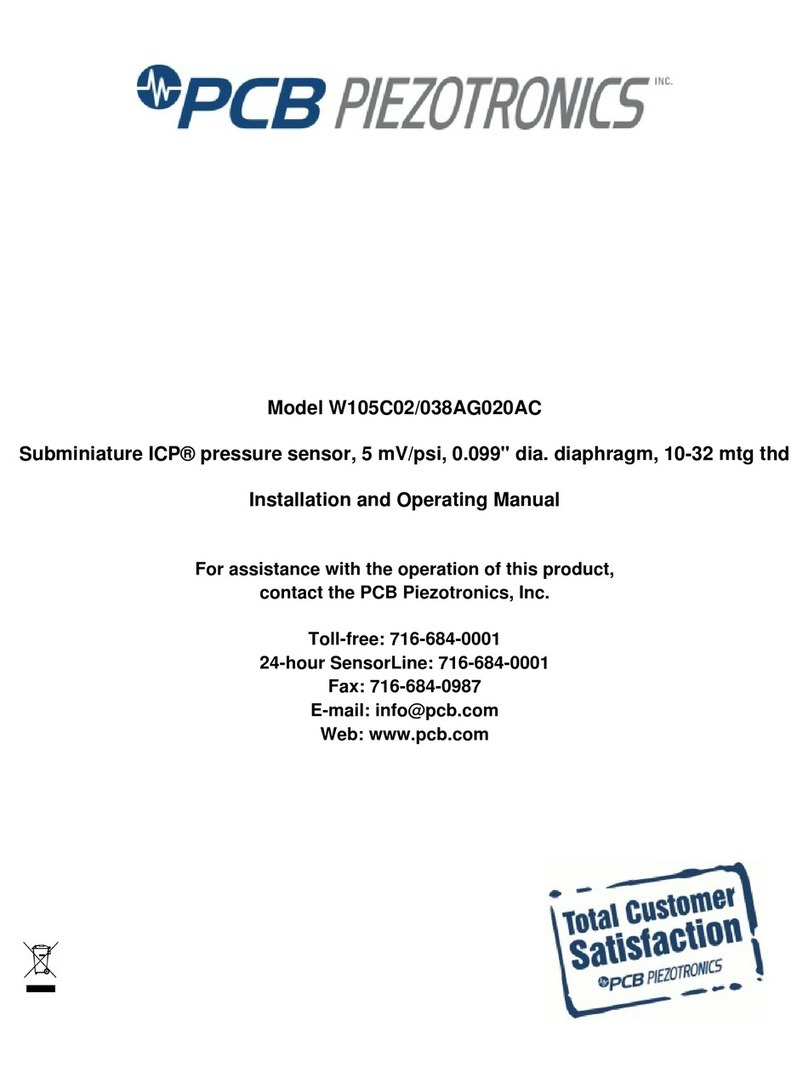
PCB Piezotronics
PCB Piezotronics ICP W105C02/038AG020AC Installation and operating manual

DoCash
DoCash mini IR user manual
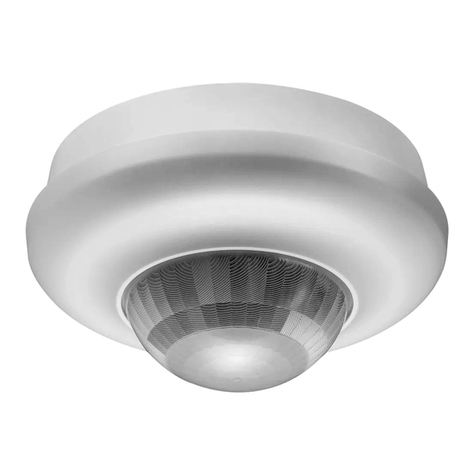
Niko
Niko Swiss Garde 360 DALI Secondary A-Comfort high ceiling... installation instructions

DSE
DSE AN-RMP1 owner's manual
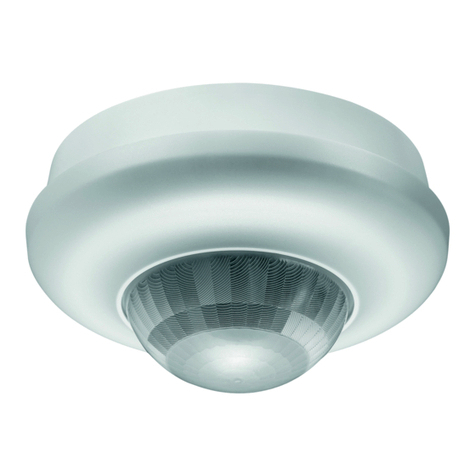
Niko
Niko DALI-2 BMS user manual
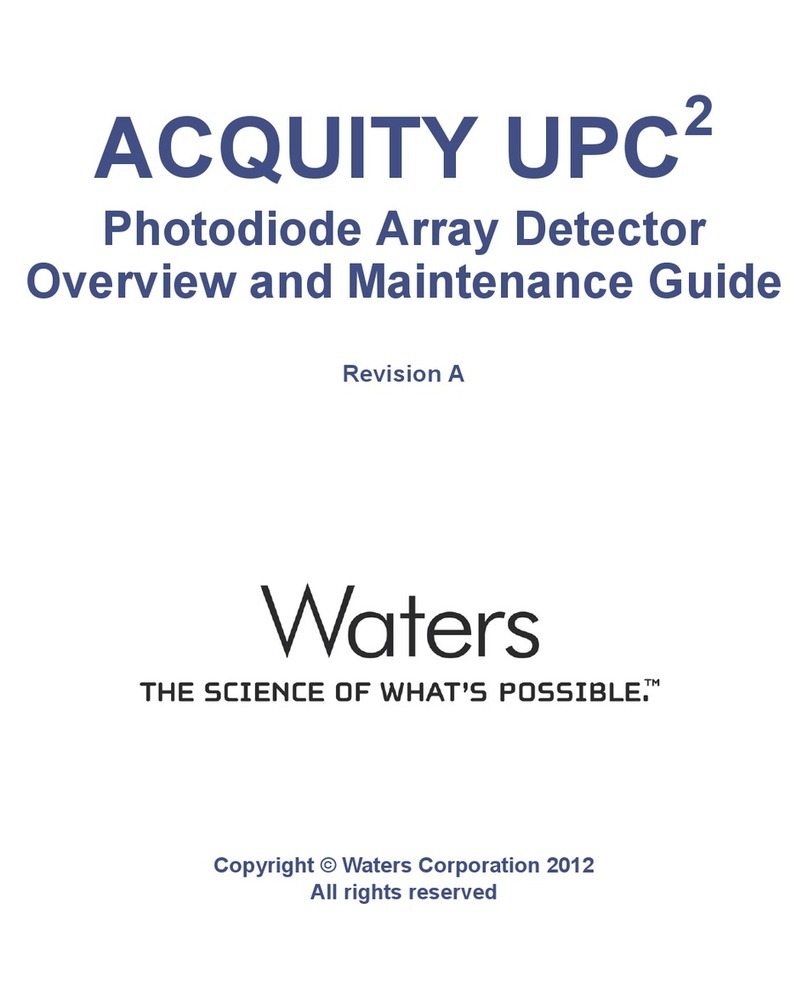
Waters
Waters ACQUITY UPC2 Overview and maintenance guide
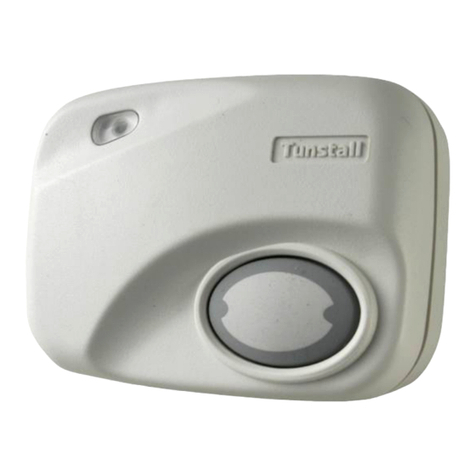
Tunstall
Tunstall Fall Detector user guide
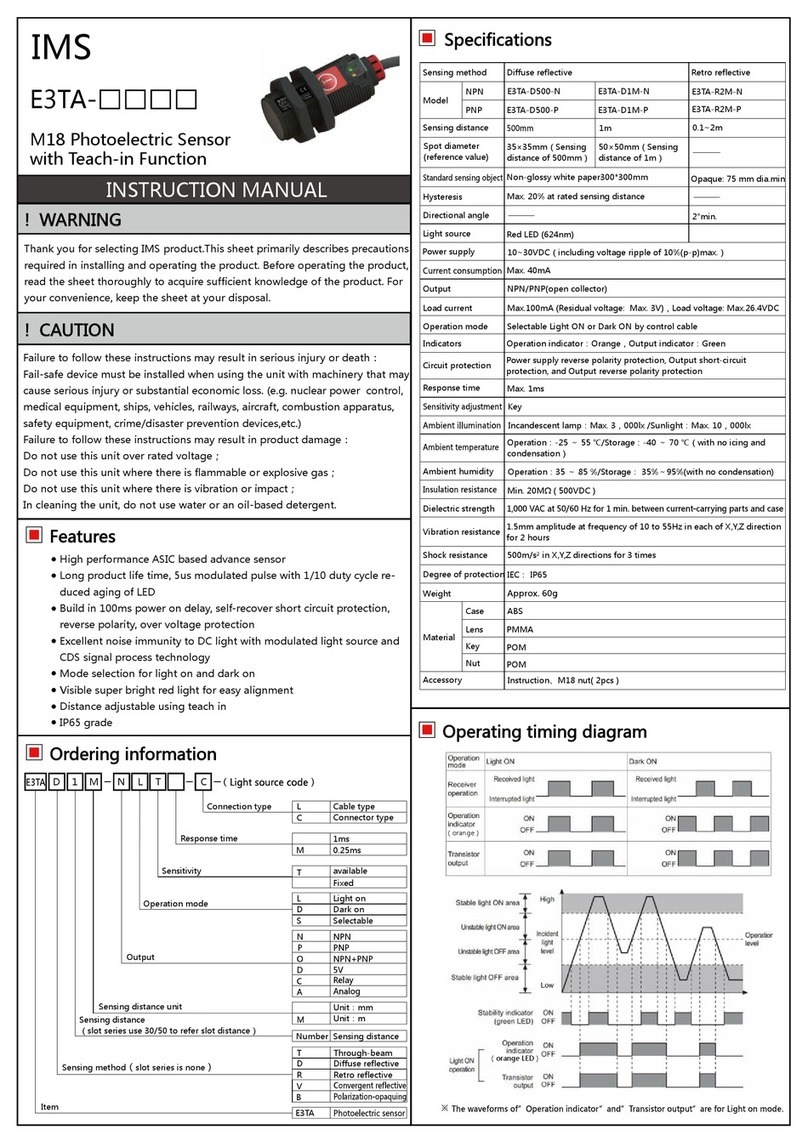
IMS
IMS E3TA Series instruction manual
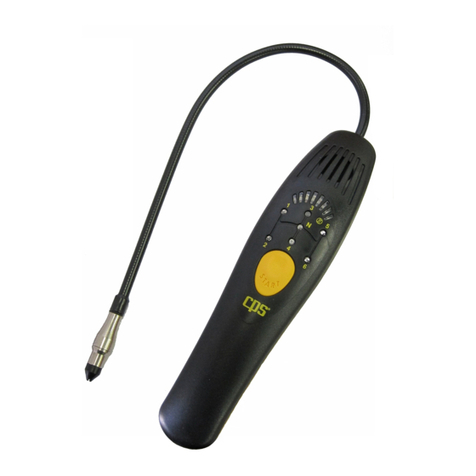
CPS
CPS Leak-Seeker II Operation manual
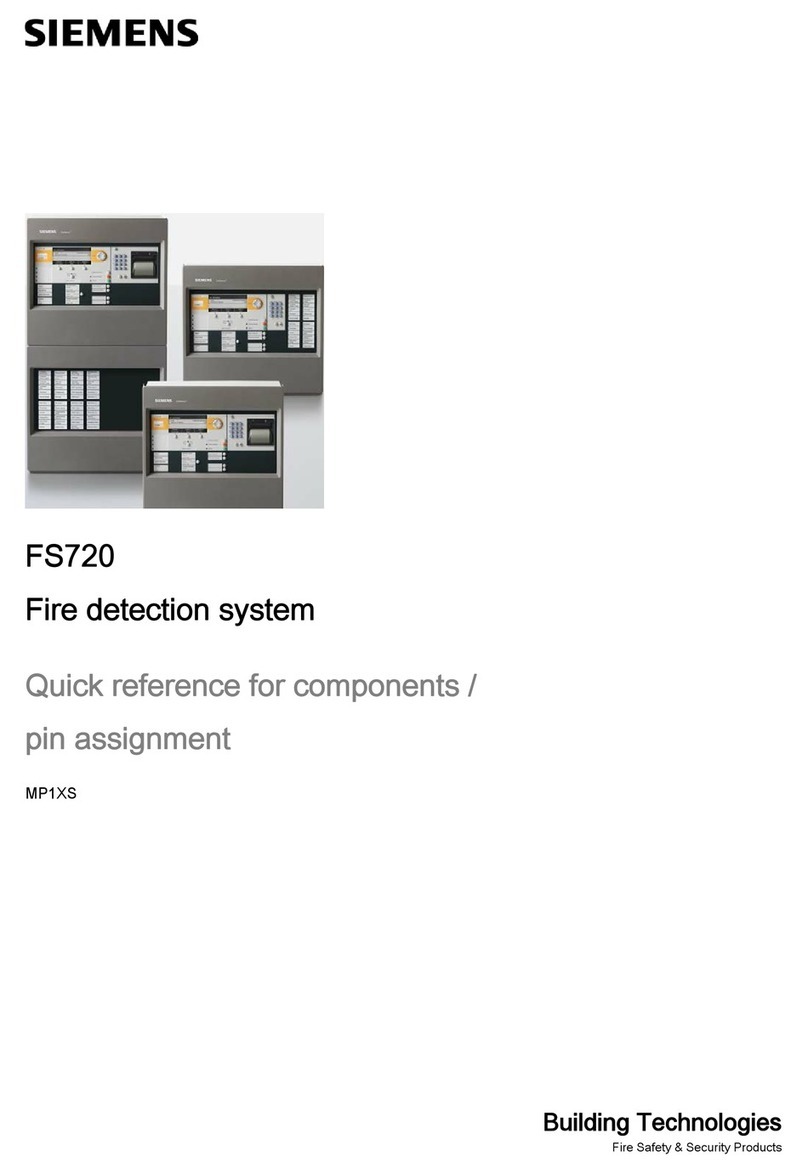
Siemens
Siemens FS720 Series Quick reference for components / pin assignment
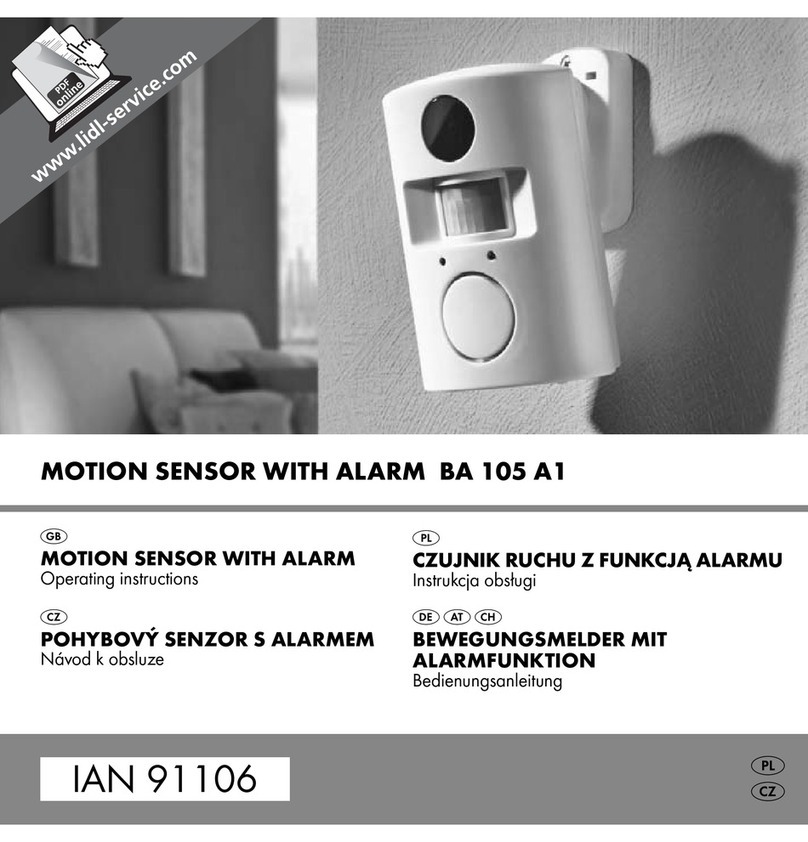
Kompernass
Kompernass BA 105 A1 operating instructions
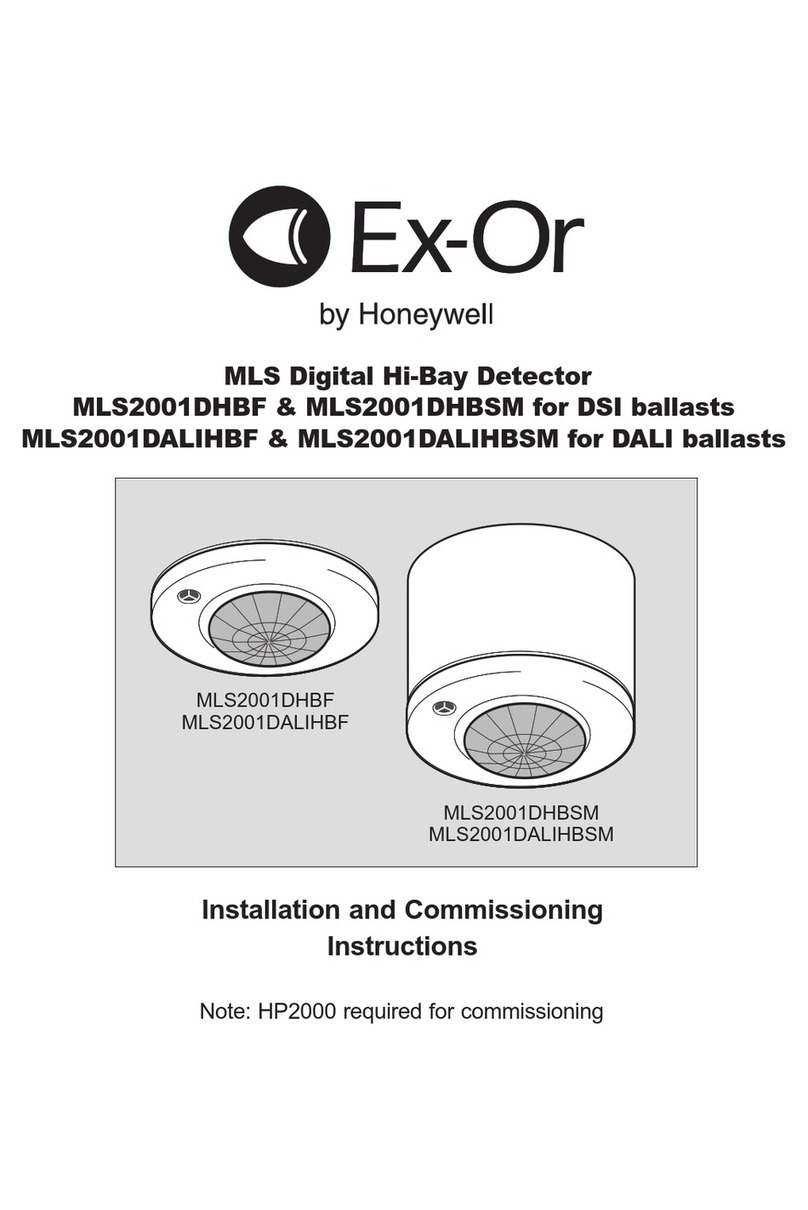
Honeywell
Honeywell Ex-Or MLS Installation and commissioning instructions


